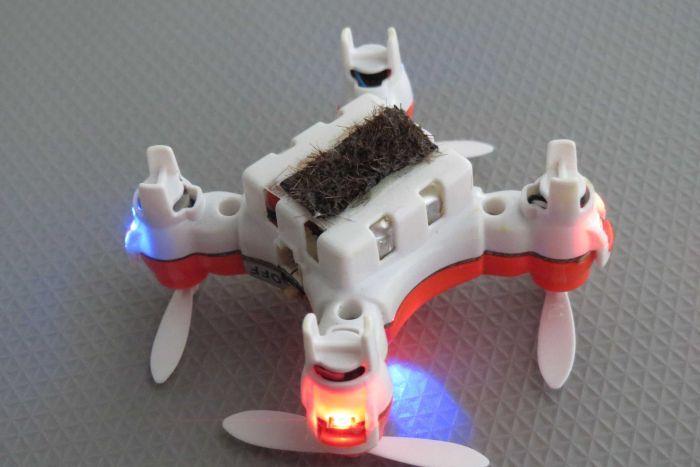Around three-quarters of global crop species rely on cross-pollination by bees and other insects. But pesticides, land clearing and climate change have caused declines in many of these creatures, creating problems for farmers.
The manually controlled drone is 4cm wide and weighs 15g. The bottom is covered in horsehair, so as not to damage plants’ stamens and pistils, coated in a sticky gel. When the drone flies onto a flower, pollen grains stick lightly to the gel, then rub off on the next flower visited. In experiments, the drone was able to cross-pollinate Japanese lilies without causing any damage.
Eijiro Miyako, lead researcher at AIST, said the team is now working on developing autonomous drones that could help farmers to pollinate their crops. GPS, high-resolution cameras and artificial intelligence will be required for the drones to independently track their way between flowers and land on them correctly, though it will be some time before all that is in place.
 “We hope this will help to counter the problem of bee decline,” said Miyako. “But importantly, bees and drones should be used together.”
“We hope this will help to counter the problem of bee decline,” said Miyako. “But importantly, bees and drones should be used together.”
There’s a lot of work to be done before this is a reality, however. Small drones will need to become more manoeuvrable and energy efficient, as well as smarter, Miyako said — with better GPS and artificial intelligence, programmed to travel in highly effective search-and-pollinate patterns. However, it could help pave the way to developing automated pollination techniques at a time when bee colonies are suffering.
Several more strategies for tackling bee decline are currently being pursued. These include better management of bees through the use of fewer pesticides, breeding crop varieties that can self-pollinate instead of relying on cross-pollination, and the use of machines to spray pollen over crops.





